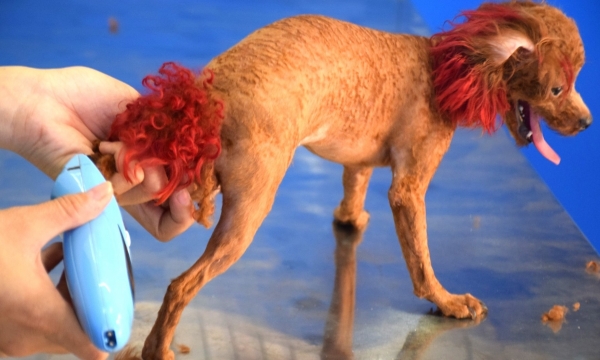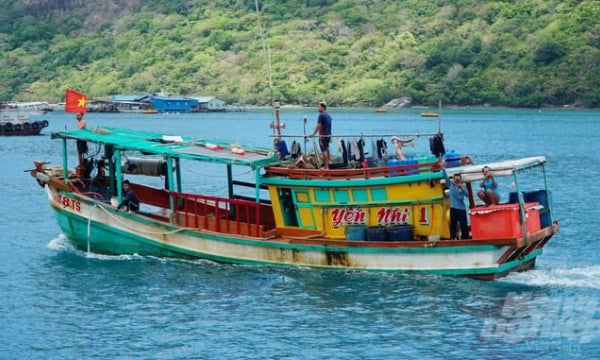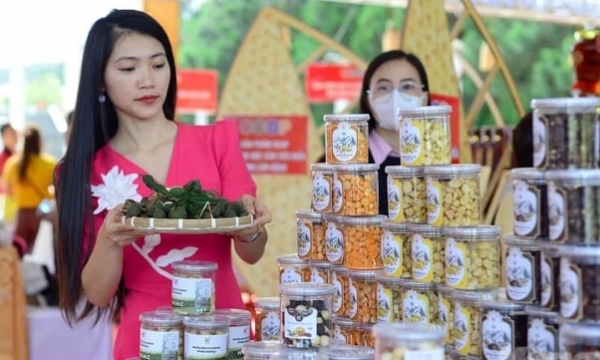May 2, 2024 | 05:02 GMT +7
May 2, 2024 | 05:02 GMT +7
Hotline: 0913.378.918
May 2, 2024 | 05:02 GMT +7
Hotline: 0913.378.918
The strategy involves a plan for sustainable production of cattle, especially beef cattle, dairy cows and meat goats, which is associated with silage production, especially maize silage. We conducted an interview with Tong Xuan Chinh, Deputy Director General of Livestock Production Department to find out more.
According to the strategy, how many heads of cattle and livestock products are aimed at by 2030?
The livestock population will be expanded considerably with about 2.4 to 2.6 million buffaloes, 6.5 to 6.6 beef cattle, 650 to 700,000 dairy cows, and 4 to 4.5 million goats and sheep. These are projected to provide 199,000 tonnes of buffalo meat, 850 thousand tons of beef, 2.6 million tonnes of fresh milk, and 110 thousand tonnes of goat meat and lamb. Meat from cattle will account for 10 to 11% of the total meat on the market.
Unlike like New Zealand, Australia, US and Canada, Vietnam does not own rich pastures, how will we plan to produce silage for cattle breeding?
As a matter of fact, Vietnam’s animal husbandry relies heavily on grass breeding and silage production. According to General Statistics Office, Vietnam has 172 thousand hectares of grass, mainly fountain one, with the output of 55.4 tonnes/ha annually and 50 thousand hectares of other forage crops, especially corns grown for silage with the output of 120 to 150 tonnes/ha annually.
The area of forage crops, which constitutes only 2% of the national cultivation area, must be expanded to nearly 1 million hectares by 2030 to meet the need of livestock production, according to experts.
Otherwise, we can also utilize agro-industrial by-products, which is a potential source of animal feeds.
In 2019, there were over 55 million tonnes of agro-industrial by-products, with 40 million tonnes being straw, can be processed into forage. Thus, it is estimated that if 100% of straw is collected, preserved and processed, the need for animal feeds as planned in the strategy will be basically satisfied.

Deputy Director General of Livestock Production Department Tong Xuan Chinh. Photo: Van Truong.
Ministry of Agriculture and Rural Development has asked certain provinces in northern and central Vietnam to grow corns for silage production in the winter period. What do you think about this?
I think it is an important step to realize the agricultural restructuring strategy. Accordingly, such provinces as Vinh Phuc, Ha Nam, Thanh Hoa, Nghe An, Hung Yen, among others, have an incentive policy to encourage the growth of maize for silage production. For the winter period, if farmers use the land for growing corns to feed their cattle or sell it to cattle breeders, they can reap a profit of 2.5 to 3.5 times as much as that of growing rice.
In addition, the larger amount of high-quality forage also facilitates the shift from pig breeding to cow breeding. Meat of cattle and dairy products are in high demand in both domestic and international market.
As maize can produce a large amount of high-energy forage and maize silage is highly valued, it is necessary to have a wide range of solutions, which include: (i) Cutting, chopping maize stovers and immediately feeding livestock; (ii) Cutting, chopping maize stovers with machines and fermenting using different kinds of silos; (iii) Producing a Total Mixed Ration (TMR); (iv) Producing Fermented Total Mixed Ration (FTMR); (v) Producing pellets of TMR; (vi) Selling the silage corn to cattle breeders or cattle breeding businesses.

Maize silage production in Vinh Phuc Province. Photo: Van Truong.
Could you please share some tips on detecting the best time to harvest corns grown for silage production?
There are currently many varieties of corns which can be grown for silage production. Most of them have the growth stages lasting between 75 and 85 days. Farmers can base on the following tips to harvest: If some leaves near the root turn to yellow or one-third of corn kernels are small and white outside, it is time to harvest. It is the time when corns are of best quality for silage production.
Many breeders nowadays follow livestock production methods such as 4F model, what do you think?
The 4F model stands for Feed - Farm - Food and Fertilizer. In this model, fertilizer is used to grow forage crops. It has been employed by such big companies as Que Lam Group, Vinamilk, TH True Milk, Moc Chau Milk, and the like.
Thank you very much for your time!
Author: Van Truong. Translated by Meagan Phan. Edited by Duc Huy.

(VAN) Pet treatment and beauty spas need skilled expertise and experience to manage their aggressive responses, like as biting.

(VAN) Minister of Agriculture and Rural Development Le Minh Hoan chaired a conference on April 25 to discuss measures for preventing drought and saltwater intrusion in the Mekong Delta and addressing future difficulties.

(VAN) 'The IUU yellow card must lead to sustainable fisheries, with increased aquaculture and reduced exploitation,' Minister Le Minh Hoan reflected.

(VAN) Quang Ninh's policy of attracting FDI investment will select investors, taking quality, efficiency, technology, and environmental protection as evaluation criteria.

(VAN) Concerns regarding the Funan Techo canal, as expressed by certain experts at the Can Tho meeting, are indeed reasonable, yet they should be articulated without exaggeration.

(VAN) Ba Ria - Vung Tau province is facing considerable challenges concerning the rapid and coordinated implementation of electronic fishing logbooks and origin tracing.

(VAN) There are a total of 12,000 OCOP products rated as 3-star or above, over 6,500 OCOP entities, around 78% of communes have successfully met the new rural requirements.